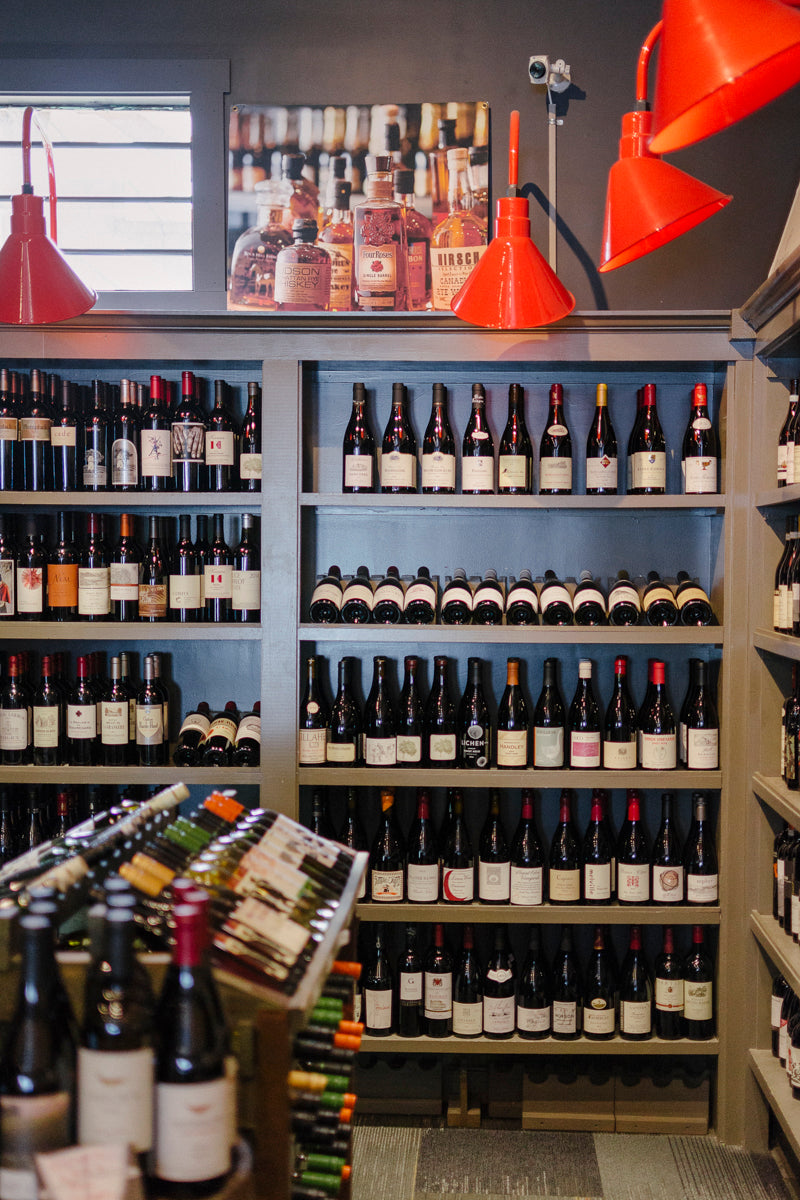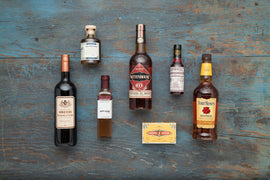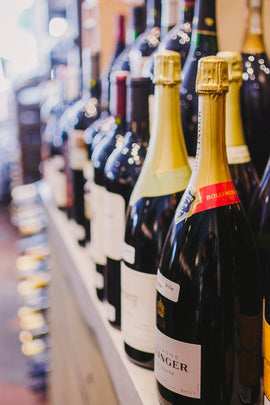The aroma of wine is a key component of the wine tasting experience. In wine tasting, the term aromatic refers to a wine which has had the time or natural ability to emit several aromas and perfumes as it opens and aerates in a glass or from a decanter. Aromatic wines may showcase elements of various flowers in one moment and fruits in another, followed by savory or herbaceous nuances depending on the wine. To sum it up, an aromatic wine is one which opens up and emits different perfumes and/or bouquets on the nose, the palate, and in the finish. It is a wine which is seemingly endless in the different and variety of notes it can emit from floral essence, to fruits, to herbs, and earthy notes, etc. Aromatic wines are not limited to white wines only, and when you pour this month’s white in the glass, its aromas are immediately recognizable and undeniably delicious. The same holds true for the red! These are the ideal wines to pair with your autumnal cuisine, (yes, it’s October already!) and will be a nice addition to the upcoming holiday feasts. (Really, these are fantastic wines for anytime.) Supply is limited, so stock up.
2017 Weingut Dönhoff Estate Riesling Nahe, Germany
Germany is a remarkable wine-producing country where magnificent world-class expressions of Riesling come from an array of amazing vineyards. If you look back to the first third of the last century, you’ll see from wine merchant lists that the top German wines were as highly prized as the best wines from Bordeaux. Altogether Germany has around 100,000 hectares of vines, and the Nahe region contributes about 4,000 of these, so it’s not a huge region. The Nahe River, like the slightly-more-famous neighboring Mosel River, is a tributary of the mighty Rhine that runs from west to east before turning north to join the main flow. The Nahe sits approximately 50 kilometers to the south, however, and thanks to being in a rain shadow from some nearby mountains in between, it also receives about 20% less rain than the Mosel, making it one of the driest regions in all of Germany. The vineyards of the Nahe tend to be slate-covered hillsides with varying additional mineral content depending on the site, but the slate of the Nahe is grey slate, a less oily and slightly harder stone than the Mosel's famous blue slate. The Nahe also tends to have more limestone in the soil than quartzite or other minerals, all of which the producers of the Nahe suggest leads to slightly more delicate acidity in their wines. Only a quarter of the Nahe is planted to Riesling, and the Riesling parcels are in the middle Nahe where Weingut Dönnhoff is located.
The Dönnhoff family first came to the Nahe region over 200 years ago, and after establishing a modest farm slowly, evolved into a full-fledged wine estate. Weingut Dönhoff is located in the little hamlet of Oberhausen, and sits unassumingly on the green banks of the placid and pastoral Nahe River. Helmut Dönnhoff has been making the wine since 1971, and now his son Cornelius works alongside him in the winery and in their 25 hectares of Erste Lage, or grand cru vineyards. Their holdings represent some of the best in the Nahe and all of Germany. Although the Nahe is a dry region, Dönnhoff does not water their vineyards as to encourage deep rooted vines. The soil is covered with organic material like straw and compost to preserve water and to avoid evaporation and erosion in heavy rains. The vines are all grown on wire frames, low to the ground to benefit from the warmth of the stony topsoil, and at a density of approx. 6,000 vines per hectare. The Riesling vines are old clones sourced from the sites in Niederhausen and Schlossböckelheim. They farm all of their vineyards sustainably, and some, such as Felsenberg, organically. Winemaking at the domain is remarkably simple. Grapes are always picked by hand at Dönnhoff, with at least 2-3 passes through each vineyard. To preserve laser-like focus and clarity in the wines, the grapes are pressed as soon as possible – within 3 hours of picking. Then, after some settling of the juice, and depending on the vineyard site, the wine will either go into stainless tanks or into 1200-liter stuck and 2400-liter doppelstuck (traditional German casks) for fermentation using native yeasts. Following fermentation, the wine is either aged in old oak vats or stainless tanks until it is ready to be filtered and then bottled. Dönnhoff has designed his cellar to have enough capacity to hold a vintage either entirely in steel or entirely in wood, depending on what he feels it needs. The estate produces a bit of Pinot Blanc and Pinot Gris, in addition to the range of Rieslings. Dönnhoff’s wines are exceptionally racy wines that are rich with complex and intense mineral overtones. They are delicious when young but have the potential to improve for up to 10 years, with the top wines lasting even longer.
Dönnhoff’s 2017 Estate Riesling is a powerful food-pairing wine, and the complexity that this Riesling will gain with age makes it especially compelling. With its aromas of petrol, flint, rose petal, violet, orange peel, apple, pear, and peach, and its flavors of apple, pear, peach, apricot, and honey, the wine pairs beautifully with fried chicken, fish and chips, salmon, crab, salads, soft light cheeses, and pasta dishes.
The 2017 Dönnhoff Estate Riesling is $24.00/bottle, $270.00/case
2014 Vara y Pulgar Tintilla Vino de la Tierra de Cádiz Andalucia, Spain
Andalucia is home to flamenco and bullfighting (and wine). The region is composed of eight provinces, stretching from the south-east to the south-west of the country, each one named for its capital city: Cadiz, Cordoba, Jaen, Huelva, Almeria, Malaga, Granada, and Seville. There are six Denominations of Origin within Andalucia: Huelva County, Jerez-Xeres-Sherry, Manzanilla de Sanlucar, Malaga, Sierras de Málaga, and Montilla-Moriles. The Mediterranean climate and mild average temperatures make this land an ideal place for growing grapes and making wines of great fame. The DO Jerez-Xérès-Sherry has the oldest regulatory Council of Spain, and the region’s wines are perhaps the most recognized worldwide. Its production is spread throughout the province of Cadiz and Seville. The Tintilla grape was cultivated in Jerez for many centuries, however it along with many other varieties disappeared after the phylloxera epidemic in the early 20th century. Jerez is famous for its Albariza soil, a type of chalk that is very light and porous. This same type of soil can also be found in the Champagne region of France. Planted in Albariza, Tintilla is able to ripen perfectly without showing extra alcohol or overripe flavors. It has a rare confluence of delicate complexity and medium to full bodied weight on the palate, with lovely minerality like other wines of the region. Recent genetic studies show that Tintilla is the same as Graciano. It is interesting to note that the first documents published on Tintilla were by Roxas Clemente in 1806, whereas the first known written reference to Graciano was a century later. Tintilla also has the name of Xeres in Australia. It’s a reasonable hypothesis to believe that the origin of this grape is in Jerez and that Tintilla is the original name.
Alberto Orte attended the University of Madrid where he studied law, and while there met Patrick Mata, who was studying business. Together they formed a partnership and started an advertising company by the name Olé Marketing which would be the foundation to the wine company they created later, Olé Imports. In 2006, Alberto decided to enroll in the master program of Oenology and Viticulture at the Politecnic University of Madrid. He then went on to start making wines from different regions throughout Spain that could not be found in the US.
Vara Y Pulgar is produced with one of the rarest grape varieties of southwestern Spain. Alberto has recovered a few cuttings from abandoned vineyards that managed to survive phylloxera, and after many years of work has managed to produce the first bottles of 100% Tintilla still, dry wine in over a century. The grapes for Vara Y Pulgar come from six hectares (about 15 acres) that Alberto planted in the DO region of Cádiz, in the southwestern part of Andalucía. While traditionally, Cadiz is known for the sweet Tintilla de Rota dessert wine, Alberto is perhaps the only person to be making dry red wine from this variety. Orte’s Tintilla vines were planted in 1993, and this wine shows beautiful concentration, both in appearance and texture. The wine was aged in a mixture of concrete vats (60%) and large oak barrels (40%) for 12 months, after which it spent 8 more months in French oak barriques. Dark-toned, spicy, tangy, and fragrant, it hints at some familiar favorites while remaining wholly unique. The wine has delicious aromas of ripe blackberry, fresh boysenberry, black currant, violets, black pepper, warm spices, iodine, dark chocolate, and crushed stone. There is the iron-tinged grip of cru Beaujolais, the aromatics and black pepper kick of northern Rhône Syrah, the berries-off-the-bush acid of Cabernet Franc/Mencía, and a few other intriguing elements you can’t quite place. The wine is medium-bodied and mineral, with a long and aromatic finish. The most striking feature of Vara y Pulgar’s Tintilla is its nerve and aromatic lift—it is a far cry from the super-rich, alcoholic, syrupy red you might expect from such a southerly locale.
Vara Y Pulgar pairs nicely with roasts or oven-baked lamb, mature sheep cheeses, and paella. It’s magnificent with classic Andalusian dishes such as: “Jamón de Huelva”-the best Iberian Ham, “Huevos a la Flamenca”-fried eggs served with vegetables and sauce in a clay pot, “Carne de Monte en adobo”-marinated wild boar or deer meat in wine, brandy, and aromatic herbs for 24 hours then roasted to perfection.
The 2014 Vara Y Pulgar is $25.00/bottle, $270.00/case.





